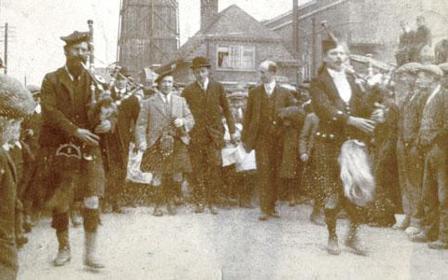The listening industry
Recorded music in its many forms has been one of Hillingdon's 20th century success stories.

The EMI factory in Hayes began in 1907, when Australian soprano Dame Nellie Melba laid the foundation stone for its Blythe Road premises. It produced gramophones, and 78 rpm records under the 'His Master's Voice' (HMV) label. Its three iconic art deco buildings were added in 1928. The factory survived a flying bomb attack on 7 July 1944. It was finally forced to move its vinyl production in the late 1970s, due to economic circumstances.
There have been several record sellers throughout the borough's recent history.
Early 20th century Uxbridge listed J James & Son, Willis & Sons and Magnet Supply among others. Today, Sounds of the Suburbs in Ruislip Manor and dub and reggae store Roots Youths Records in Hillingdon provide similar outlets.